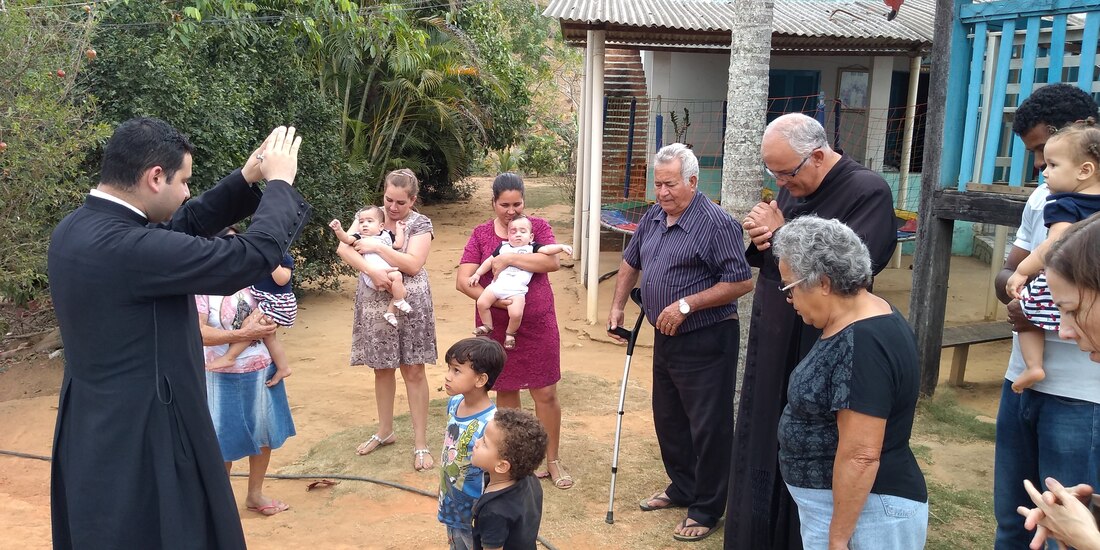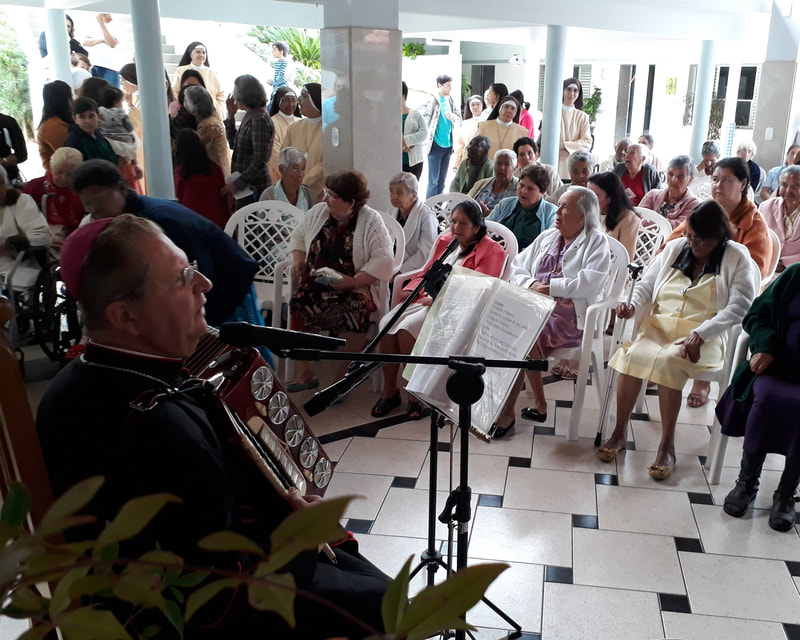|
One of the most startling things for a visiting foreigner, accustomed to the Tridentine Masses of London, New York, Madrid or even smaller places like Harrisburg, Pennsylvania is that in Campos, being a traditional Catholic is not about the liturgy in isolation, but to do with an entire way of life. That is, the tradition that is preserved is not simply the part which is done in church, but is an unselfconscious orientation to a life lived by and for God. The hierarchy of the family and community depends on it. The roles and behavior of men, women and children depend on it. The seasonal cycles of planting and harvest depend on it. Every conversation, meal, and hour spent in work or prayer depends on it. In the village of Varre-Sai, which lies at the farthest point inland in the diocese of Campos, one sees this traditional life even more vividly than in the bigger towns, where “progressive” Catholics and protestants live side by side with the traditional Catholics. In the most rural communities children run enthusiastically to greet adults, kissing the backs of their hands and asking a blessing of priests, teachers, grandmothers and other respected men and women. Boys and girls line up separately and sit separately for catechism, and men and women sit separately in Holy Mass. One stands out of respect when an elder family member or head of household arrives in the home or at the table. One does the same when clergy or religious enter or are introduced. Clothing has meaning for everyone: Clergy in their clerical garb (there are even special cassocks for doing manual labor and for sports and for sleeping); women in women’s garb; men in men’s garb. One puts on nice clothes for Mass. Given that many people do manual labor and even for the less active the climate is very hot the custom of always washing up and putting on clean clothes for meals and for church makes practical sense. The liturgy is not an erudite exercise here. Silence and darkness don’t seem to have the appeal that they have in rainy countries with long winters. The churches are beautiful in a colorful, boisterous, bright way. Everything has been built by hand in dribs and drabs. The high altars are cheerfully ornate, the ceilings painted with scenes for meditation: the mysteries of the rosary, scenes from the Old Testament. Gold paint is used where possible (historic churches are often full of gilded wood and plaster around the altars, balconies and windows). The people are colorful in their dress and enthusiastic in their song and prayer. The dialogue Mass is popular in some parishes. At a weekday evening Mass the women may lead long hymns, and before and after Communion a man might lead prayers of preparation and thanksgiving which the congregation recites together by heart. On Sundays and feasts the parish choirs sing. One priest usually covers both a parish church and the dozen associated rural chapels. When the bishop comes to celebrates for feasts or special events the seminarians come along by busload to sing Gregorian chant and polyphony and provide support for the more elaborate rite. Religious life is not in any way limited to the Mass, but flourishes in the frequent feast days, with their processions, raffles, and opportunities for endless hot pastries and cakes, sold at stands set up around the church yard. It flourishes, too, in the enthusiastic public praying of the rosary, usually led by the parish priest, who alternates the recitation of the Our Father and Hail Mary with the congregation. The Apostolate of Prayer (a centuries-old lay group), the Eucharistic Crusade (a devotional group for children), men’s rosary groups, blessings of homes and fields and factories, calvagadas (processions on horseback), traveling images of Our Lady, and other devotional customs thrive here.
Every parish has a school, a convent, a home for the elderly who have no family to care for them, and other services, depending on the needs of the town. The priests have no rest, blessing and baptizing, visiting, consoling, confessing, and feeding their flocks. They in turn are well cared-for by the parish: sometimes to the chagrin of the recently ordained, who find their cassocks getting too tight from the generous welcomes! The priests are part of the daily life of the community, too, as are the religious sisters resident in nearly every town. There is, of course, no lack of the normal dramas and squabbles of human beings, but there is a recognition that we must care for one another and help one another that is reinforced by the faith of the people, the pastoral leadership of the clergy, the too-familiar poverty, and the natural warmth of heart typical of Brazil. Comments are closed.
|
Friends of Campos, Inc.Friends of Campos, Inc. is a US-based not-for-profit (501c3) which supports the social and educational projects of the Personal Apostolic Administration of Saint John Mary Vianney, most of which are located around the diocese of Campos dos Goytacazes in the state of Rio de Janeiro, Brazil. Archives
April 2023
Categories |
FRIENDS OF CAMPOS, INC. is a 501(c)(3) tax-exempt organization.
© 2023 Friends of Campos, Inc.





 RSS Feed
RSS Feed